Irish Country Living first reported on the Irish Community Rapid Response (ICRR) Air Ambulance last May. Back then, the helicopter was sitting idle, but it took to the air in July 2019. It provides a vital lifesaving service, offering fast access to advanced medical interventions by highly trained medics.
Critically, the ICRR Air Ambulance can bring the casualty to the hospital that best suits their life-saving needs, not just the closest geographically. Operating from their base at Rathcoole Aerodrome in north Cork, the air ambulance can cover a 25,000km2 area within 20 minutes of emergency medical care. That area covers most of the southwest.
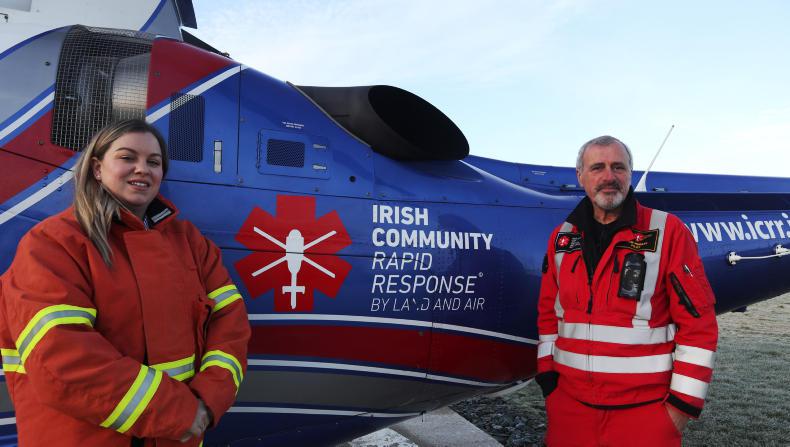
Operations manager Ruth Bruton and pilot John Murray beside the ICRR Air Ambulance.
Unfortunately, since Irish Country Living visited Rathcoole Aerodrome last month, the air ambulance was grounded on Friday 3 April. Speaking to the staff and crew there, they explained that due to a higher demand than expected, a serious strain was put on funding.
The service is run in a partnership between the charity ICRR and the HSE National Ambulance Service (NAS), who provide the medical crew. The NAS tasks the service through 112/999 calls to its National Emergency Operations Centre (NEOC). However, the helicopter, pilots, airbase, insurance and fuel are 100% funded through donations to the charity.
In its first month alone, the aircraft responded to 56 emergencies. They achieved 285 in six months, which raised their estimates to 600 possible lifesaving missions per year. The charity had planned for 350 missions in its first 12 months. This was based on mission figures from the State funded Aer Corps Emergency Aeromedical Service (EAS) in 2018, which saw them carry out 310 missions.
In order to prolong the service beyond February, a decision was made to reduce the cover the air ambulance offered from seven days per week to five. Operations manager for ICRR Ruth Bruton said at the time that this is not an ideal situation, but it would ensure the service for six more weeks.
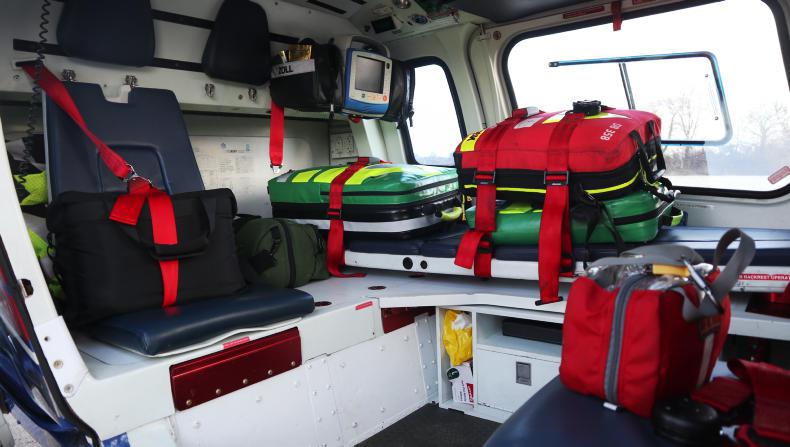
Inside the air ambulance.
In a statement, John Finnegan the voluntary chairperson of ICRR, said the COVID-19 pandemic had affected their community fundraising campaign. He added that their helicopter provider Sloane Helicopters and their leasing partners, Milestone Aviation, gave them six weeks credit to come up with alternate funding streams. This will allow the air ambulance to keep operating in the short term.
He added that they applied for interim funding for the service from the Government, but it has become apparent interim financial support is not going to come. They are once again appealing for community support in their fundraising campaign.
I got a call from a man who lost his job recently and has a young family to support. He insisted on giving us €10 per month as he said he needs us to be there if anything should happen to his loved ones
“We now need support more than ever before, we are looking for volunteers to be part of our life-saving team. Those who are self-isolating, please give us a few hours of your time in social media, marketing or any fundraising ideas that you have.
“We know that a large number of people in our country are having difficulties at this time. I got a call from a man who lost his job recently and has a young family to support. He insisted on giving us €10 per month as he said he needs us to be there if anything should happen to his loved ones and all other emergencies such as heart attacks and accidents are still happening,” said John, who is also a frontline nurse in the health service.
Eircodes
The aircraft itself has a crew of three on board, one pilot and two medics from the NAS.
Ridiculed in some quarters, the introduction of Eircodes has proved especially beneficial to the 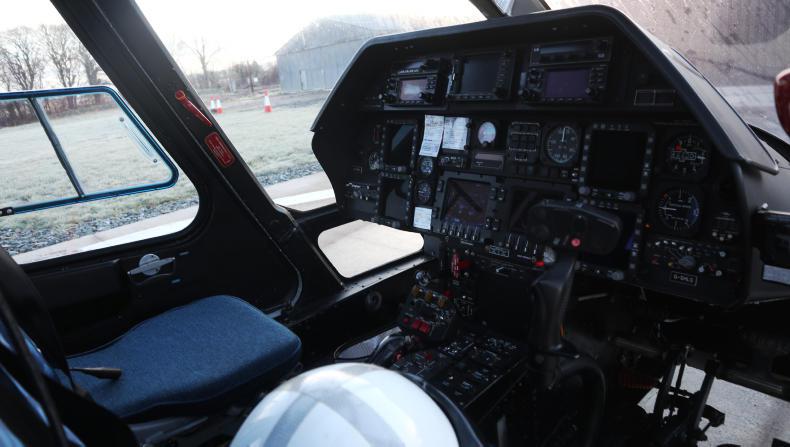
emergency services in rural areas.
Pilot John Murray said: “It’s important for the farming community to be aware of their Eircode, just have it in your phone so you can send it on. That’s our first point of contact. Always have your phone on you.”
In terms of flying to an on-farm emergency, the Eircode usually leads to the dwelling house on the farm, so the air ambulance crew still needs to locate the casualty. This isn’t always a straightforward feat, John explained.
“If there are other people there to try and indicate where the casualty is on the farm, that can be done with somebody coming out waving a high-vis jacket. There’s very little point in standing in a green field in camouflage equipment, which happens a lot. It’s very hard to spot someone against the green field background.
Every case is different, we’ve been to numerous farm incidents
“If you are injured the NAS can send you a link to track to your phone. It’s reasonably accurate and it gives a good indication of where they are within the farm. If someone is down in a ditch on a farm, that would be quite difficult for us to find. If the casualty is in a farm building, try and get someone to come out and indicate which building.”
The dangerous nature of farming is reflected in the fact that 40% of the missions the air ambulance has been called out to are farm related.
As John says: “Every case is different, we’ve been to numerous farm incidents. Anything from falls, machinery incidents and interactions with animals. We’ll get as close as we can to the casualty without upsetting things on the actual scene. We’ll land usually within 70 to 80 feet of the patient, it facilitates lifting them back into the aircraft.”
Day-to-day
Each morning the crew prepare the aircraft and run through a series of checks. Pilots are trained to do a basic maintenance check and that qualification must be renewed every year.
John said: “I physically check the aircraft. When I’m doing that the lads are checking their own equipment and putting it on board.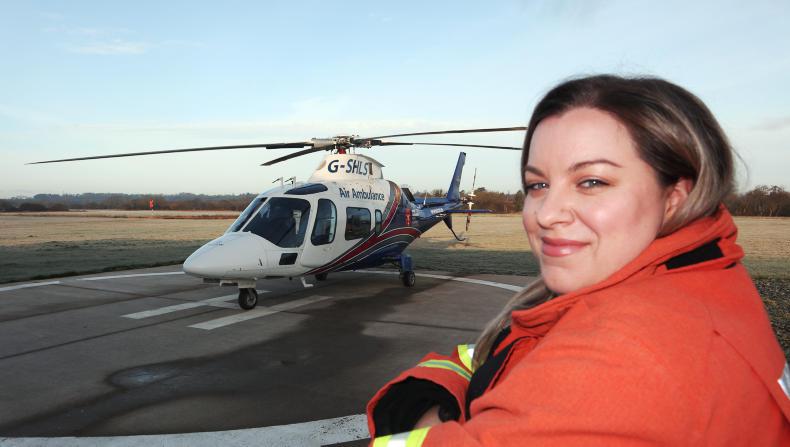
“We’re legally obliged to have a briefing each morning. We have a set formula of things we run though. Once we’re happy, the lads will declare us online and we wait for calls. Weight balance, fuel load and weather is continuously checked during the day and we also check the Notices to Airmen (NOTAMs) which are published by the aviation authority daily.”
NOTAM is a notice filed with an aviation authority to alert aircraft pilots of potential hazards along a flight route or at a location that could affect the safety of the flight. For example, this could be a beacon they normally use in Cork airport which is out of use that day or there’s no jet fuel available in Waterford.
For weight balance, the crew must factor in the possible weight of the patient as well as their own weights and that of equipment and fuel.
“We work all the figures out. Flying into a site we’re on reduced power. The aircraft is quite safe, everything has a redundancy. We can always fly with just one engine. We work very much as a team of three.”
At the airfield, there must be five people on site at all times, with a pilot and two paramedics taking three of the spots on the team. There must be at least two trained fire fighters present.
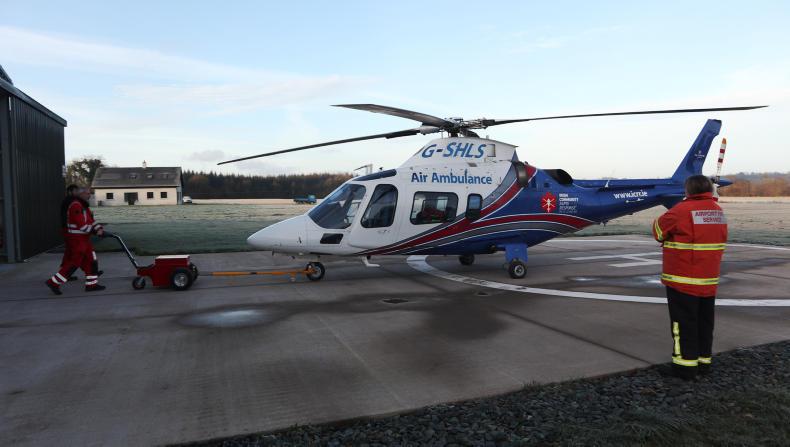
The air ambulance can cover a 25,000km2 area within 20 minutes of emergency medical care.
It’s a small team but everyone chips in. They all understand the value of team work. Ruth embodies this and her operations manager role encompasses a wide brief.
“Any day here, I could be firefighting, cleaning the toilet or answering the phone. Everyone rows in, We have a small team but everyone is dedicated to this. That’s why we run a tight ship. We have a phenomenal group of volunteer fire fighters that we trained, without them we can’t operate.”
Any individual or business who wishes
to make a donation to the ICRR Air
Ambulance can do so by going to their website www.icrr.ie
Read more
It’s an emergency
Irish Country Living first reported on the Irish Community Rapid Response (ICRR) Air Ambulance last May. Back then, the helicopter was sitting idle, but it took to the air in July 2019. It provides a vital lifesaving service, offering fast access to advanced medical interventions by highly trained medics.
Critically, the ICRR Air Ambulance can bring the casualty to the hospital that best suits their life-saving needs, not just the closest geographically. Operating from their base at Rathcoole Aerodrome in north Cork, the air ambulance can cover a 25,000km2 area within 20 minutes of emergency medical care. That area covers most of the southwest.

Operations manager Ruth Bruton and pilot John Murray beside the ICRR Air Ambulance.
Unfortunately, since Irish Country Living visited Rathcoole Aerodrome last month, the air ambulance was grounded on Friday 3 April. Speaking to the staff and crew there, they explained that due to a higher demand than expected, a serious strain was put on funding.
The service is run in a partnership between the charity ICRR and the HSE National Ambulance Service (NAS), who provide the medical crew. The NAS tasks the service through 112/999 calls to its National Emergency Operations Centre (NEOC). However, the helicopter, pilots, airbase, insurance and fuel are 100% funded through donations to the charity.
In its first month alone, the aircraft responded to 56 emergencies. They achieved 285 in six months, which raised their estimates to 600 possible lifesaving missions per year. The charity had planned for 350 missions in its first 12 months. This was based on mission figures from the State funded Aer Corps Emergency Aeromedical Service (EAS) in 2018, which saw them carry out 310 missions.
In order to prolong the service beyond February, a decision was made to reduce the cover the air ambulance offered from seven days per week to five. Operations manager for ICRR Ruth Bruton said at the time that this is not an ideal situation, but it would ensure the service for six more weeks.

Inside the air ambulance.
In a statement, John Finnegan the voluntary chairperson of ICRR, said the COVID-19 pandemic had affected their community fundraising campaign. He added that their helicopter provider Sloane Helicopters and their leasing partners, Milestone Aviation, gave them six weeks credit to come up with alternate funding streams. This will allow the air ambulance to keep operating in the short term.
He added that they applied for interim funding for the service from the Government, but it has become apparent interim financial support is not going to come. They are once again appealing for community support in their fundraising campaign.
I got a call from a man who lost his job recently and has a young family to support. He insisted on giving us €10 per month as he said he needs us to be there if anything should happen to his loved ones
“We now need support more than ever before, we are looking for volunteers to be part of our life-saving team. Those who are self-isolating, please give us a few hours of your time in social media, marketing or any fundraising ideas that you have.
“We know that a large number of people in our country are having difficulties at this time. I got a call from a man who lost his job recently and has a young family to support. He insisted on giving us €10 per month as he said he needs us to be there if anything should happen to his loved ones and all other emergencies such as heart attacks and accidents are still happening,” said John, who is also a frontline nurse in the health service.
Eircodes
The aircraft itself has a crew of three on board, one pilot and two medics from the NAS.
Ridiculed in some quarters, the introduction of Eircodes has proved especially beneficial to the 
emergency services in rural areas.
Pilot John Murray said: “It’s important for the farming community to be aware of their Eircode, just have it in your phone so you can send it on. That’s our first point of contact. Always have your phone on you.”
In terms of flying to an on-farm emergency, the Eircode usually leads to the dwelling house on the farm, so the air ambulance crew still needs to locate the casualty. This isn’t always a straightforward feat, John explained.
“If there are other people there to try and indicate where the casualty is on the farm, that can be done with somebody coming out waving a high-vis jacket. There’s very little point in standing in a green field in camouflage equipment, which happens a lot. It’s very hard to spot someone against the green field background.
Every case is different, we’ve been to numerous farm incidents
“If you are injured the NAS can send you a link to track to your phone. It’s reasonably accurate and it gives a good indication of where they are within the farm. If someone is down in a ditch on a farm, that would be quite difficult for us to find. If the casualty is in a farm building, try and get someone to come out and indicate which building.”
The dangerous nature of farming is reflected in the fact that 40% of the missions the air ambulance has been called out to are farm related.
As John says: “Every case is different, we’ve been to numerous farm incidents. Anything from falls, machinery incidents and interactions with animals. We’ll get as close as we can to the casualty without upsetting things on the actual scene. We’ll land usually within 70 to 80 feet of the patient, it facilitates lifting them back into the aircraft.”
Day-to-day
Each morning the crew prepare the aircraft and run through a series of checks. Pilots are trained to do a basic maintenance check and that qualification must be renewed every year.
John said: “I physically check the aircraft. When I’m doing that the lads are checking their own equipment and putting it on board.
“We’re legally obliged to have a briefing each morning. We have a set formula of things we run though. Once we’re happy, the lads will declare us online and we wait for calls. Weight balance, fuel load and weather is continuously checked during the day and we also check the Notices to Airmen (NOTAMs) which are published by the aviation authority daily.”
NOTAM is a notice filed with an aviation authority to alert aircraft pilots of potential hazards along a flight route or at a location that could affect the safety of the flight. For example, this could be a beacon they normally use in Cork airport which is out of use that day or there’s no jet fuel available in Waterford.
For weight balance, the crew must factor in the possible weight of the patient as well as their own weights and that of equipment and fuel.
“We work all the figures out. Flying into a site we’re on reduced power. The aircraft is quite safe, everything has a redundancy. We can always fly with just one engine. We work very much as a team of three.”
At the airfield, there must be five people on site at all times, with a pilot and two paramedics taking three of the spots on the team. There must be at least two trained fire fighters present.

The air ambulance can cover a 25,000km2 area within 20 minutes of emergency medical care.
It’s a small team but everyone chips in. They all understand the value of team work. Ruth embodies this and her operations manager role encompasses a wide brief.
“Any day here, I could be firefighting, cleaning the toilet or answering the phone. Everyone rows in, We have a small team but everyone is dedicated to this. That’s why we run a tight ship. We have a phenomenal group of volunteer fire fighters that we trained, without them we can’t operate.”
Any individual or business who wishes
to make a donation to the ICRR Air
Ambulance can do so by going to their website www.icrr.ie
Read more
It’s an emergency






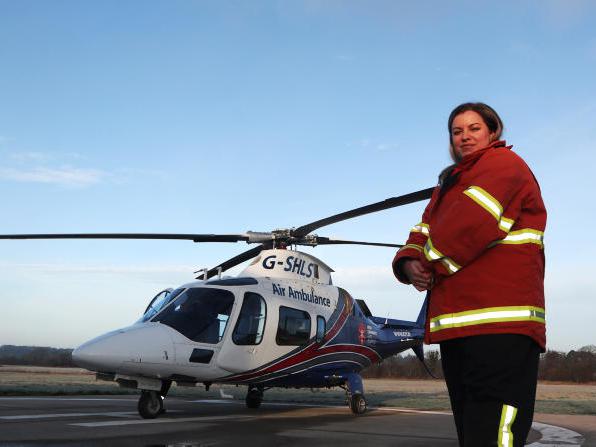




 This is a subscriber-only article
This is a subscriber-only article










SHARING OPTIONS: